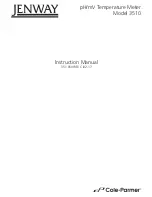
MULTISERVER 500
10
2.1 Multiplexing and the Multiserver 500
The Multiserver 500 is a standalone voice/fax/data
multiplexor. It converts analog voice into low-bit-
rate digital format, and multiplexes the digitized
voice with data into a composite digital stream. The
composite stream is transmitted over a leased line
to a remote site.
At the remote site, another Multiserver 500
demultiplexes the composite stream into data and
digitized voice, and reconverts the digitized voice
into analog form.
It’s the low bit rates that allow voice signals to
share a leased line with data. When you add
digitized voice to an already existing data link, you
don’t pay anything more than your existing leasing
costs; the voice gets a free ride.
In addition to accepting analog voice signals for
digital conversion, the Multiserver 500 can also
process analog signals from a fax machine. When
the mux detects fax signals, the firmware switches
into fax mode. In this mode, signals are
demodulated into fax symbols and passed as data to
the remote end. At the remote end the symbols are
remodulated to the correct standards.
A typical Multiserver 500 application is shown in
Figure 2-1.
2.2 Description of the Multiserver 500
Physically, the Multiserver 500 is an assembly of
printed circuit boards—one data
channel/composite channel and one voice/fax
module—housed in a rectangular enclosure (see
Figure 2-2). The front of the unit includes an LED
display, an LCD display, and a keypad.
The LED display monitors power status, self-test
results, link conditions, and voice and data channel
activities.
The LCD display provides status, events, and
messages, and together with the keypad is used for
configuration, diagnostics, and administration
functions.
The physical ports for connecting the Multiserver
500 to the various interfaces are on the back of the
unit.
2. Introduction
Figure 2-1. Typical Multiserver 500 Application.
PBX
MAINFRAME
LOCAL
MULTISERVER 500
COMPOSITE
LINK
REMOTE
MULTISERVER 500
VOICE












































